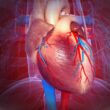Heart Disease
A Complete Guide to Heart Disease Understanding
Heart disease, a catch-all word for a number of heart-related illnesses, continues to be the world’s leading cause of mortality. It interferes with the heart’s normal blood pumping function, depriving your body of essential nutrients and oxygen. This article explores the definition, various forms, causes, risk factors, and potential preventive measures of heart disease, delving into its complexity.
Table of Contents

Heart Disease: What Is It?
Heart disease refers to a range of disorders that affect the heart’s muscle, rhythm, valves, blood arteries, and heart itself. The most prevalent kind, coronary artery disease (CAD), is caused by fatty deposits, or plaque, accumulating inside the coronary arteries. Because of this plaque, blood flow to the heart muscle is hampered by artery narrowing.
Among the various forms of heart disease are:
- Arrhythmias: Abnormal electrical signals in the heart that result in irregular heartbeats.
- Heart failure: is the inability of the heart to pump blood effectively due to weakness or enlargement.
- Heart defects: that are present from birth are known as congenital heart defects.
- Heart valve disease: Impaired blood flow caused by damaged or faulty heart valves.
- Cardiomyopathy: A disease that impairs the heart muscle’s ability to pump blood.
An explanation of the various types of heart disease
- The most common type of heart illness: coronary artery disease (CAD), frequently results in heart attacks. Angina, or chest pain, is brought on by plaque accumulation in the coronary arteries, which also increases the risk of a heart attack in the event of a blockage.
- Arrhythmias: Heart rhythm irregularities can range from benign to fatal. Common forms include bradycardia (slow heart rate) and tachycardia (fast heart rate), as well as atrial fibrillation (AFib), which is characterised by rapid and irregular heartbeats in the upper chambers.
- Heart Failure: When the heart weakens and is unable to pump blood effectively, this ailment develops. It may arise from hypertension, CAD, or other cardiac conditions. Breathlessness, exhaustion, and swelling in the ankles and legs are among the symptoms.
- Congenital Heart Defects: These are birth-related structural defects involving the heart or blood arteries. While some faults can be treated with surgery or other interventions, others have more serious problems with blood flow.
- Heart Valve Disease: Blood flow through the heart’s chambers can be impeded by damaged or malfunctioning heart valves. Infections, birth abnormalities, or aging-related wear and tear can all contribute to this.
- Cardiomyopathy: This illness causes enlargement, thickening, or stiffness in the heart muscle itself. Arrhythmias and cardiac failure may result from it. Genetic, viral, or brought on by particular drugs or poisons might all be the cause.
Heart Disease Causes
Heart disease develops as a result of several circumstances. Certain things can be controlled, but not all of them:
- Bad lifestyle choices: Being a smoker, eating a diet heavy in trans and saturated fats and low in fruits and vegetables, not exercising, and drinking too much alcohol all raise the risk.
- High blood pressure: If left unchecked, high blood pressure destroys blood vessels and strains the heart.
- High cholesterol: Plaque accumulation in arteries is a result of elevated LDL (“bad”) cholesterol levels.
- Diabetes: This illness raises the risk of heart disease by damaging blood vessels and nerves.
- Family history: You run a higher risk if you have a close family who has heart disease.
- Age: As people age, their risk of heart disease rises.
- Obesity: Being overweight increases cardiac strain and is linked to other risk factors.
Risk Elements and Preventive Techniques
You can lower your risk of heart disease greatly by taking care of modifiable risk factors. The following are some crucial tactics:
- Continue eating a balanced diet: Limit sodium, cholesterol, and fats—both trans and saturated. Give priority to lean protein, whole grains, fruits, and veggies.
- Regular exercise: Aim for 150 minutes or more per week of moderate-to-intense activity or 75 minutes or more of vigorous exercise.
- Control your stress: Prolonged stress can raise blood pressure and lead to bad habits. Use stress-relieving methods such as yoga or meditation.
- Sustain a healthy weight: If you are overweight or obese, losing weight can make a big difference in your heart health.
- Give up smoking: Smoking raises the risk of heart attacks and strokes and destroys blood vessels.
- Manage blood pressure and cholesterol: To control these risk factors, take prescription drugs as directed by your physician.
- Obtain routine examinations: See your physician for routine examinations to keep an eye on your blood pressure, cholesterol, and sugar levels.
In summary
Although is a dangerous and complicated ailment, it is frequently avoidable with lifestyle changes and early detection. You can manage your heart health by being aware of the various forms of their causes, and risk factors. To be proactive in preventing and leading a healthy life, make good decisions, take care of any pre-existing medical concerns, and see your doctor frequently.


